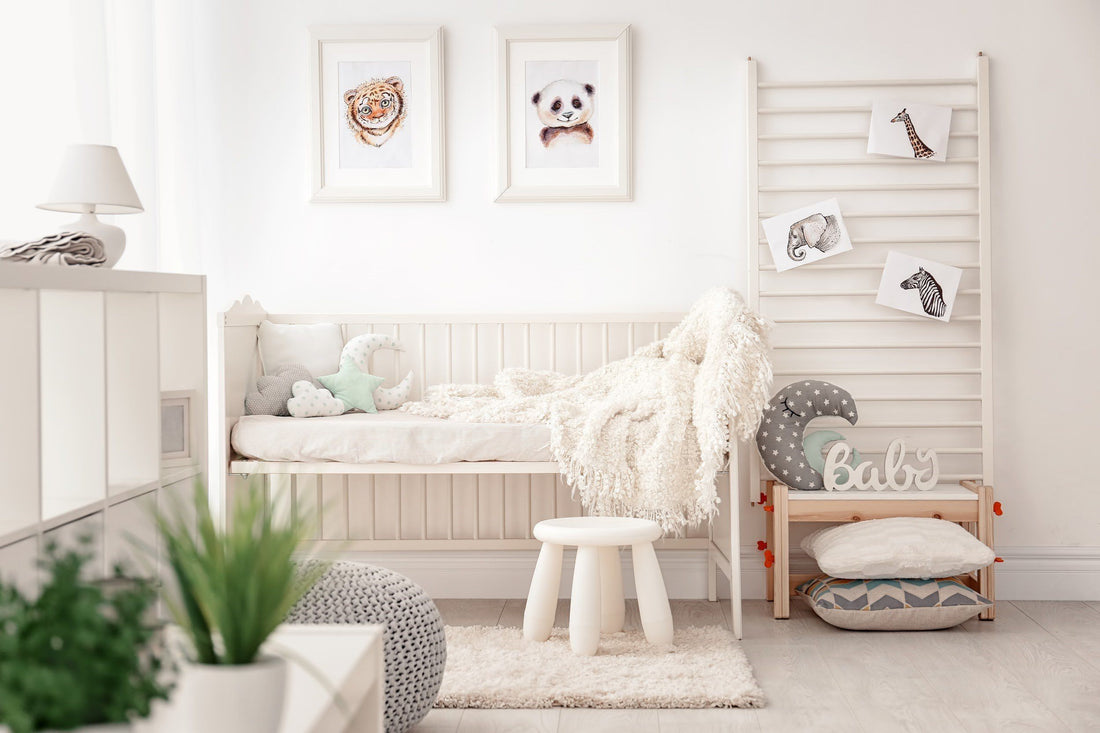How to Transform Your Kid's Bedroom
Everyone needs a safe haven that is calm and quiet, especially a child experiencing anxiety. Your child’s bedroom can be that space: a place where stress melts away and it’s easy to relax, play, read, study, and fall asleep at night. With well-chosen colors, textures, and strategic organization, you can transform any room into a safe haven.
Using Relaxing Bedroom Colors
Perhaps you hardly notice the colors on your walls. Perhaps you didn’t even pick those wall colors. They came with the house, so you haven’t put any thought into changing them. But to a child with anxiety, colors can play a significant role in producing a calming atmosphere. The first step toward a more relaxing bedroom starts with a color scheme makeover.
Cool tones on the walls — such as sage green, ice blue, or gray – can immediately give the room a calming ambience. In fact, studies show that people get the most sleep in a bedroom painted in blue hues. However, younger children may find these colors boring or dull. A warm orange or light yellow, pink, or lavender could be the perfect compromise, giving the room a cozy feeling while avoiding the loudness and intrusive quality of brighter primary colors.
Does the thought of repainting the entire room seem too daunting? Try painting just one accent wall with a calming color. If your child falls in love with it, you can do the other walls at a later time. You can also incorporate a cool color palette of blue, green, and gray through bed linens and curtains. When your child steps foot in their bedroom, the beautiful color scheme will be the first thing they sense. You can almost hear them take a deep breath of relaxation!
Incorporating Textures
Children who experience anxiety and difficulty concentrating may be particularly sensitive to in their environment that they must touch and feel. For example, a soft blanket on the bed. The texture of bed linens, pillows, chairs, and floor coverings can make a huge contribution to your child’s ability to relax in their bedroom. Consider using soft flannel cotton bed sheets during the winter months to make a cozy sleeping space. If your child craves more “snuggle” for sleeping, try using a weighted blanket such as a duvet or a quilt to give him an added sensation of security.
Create sitting areas, for reading and studying, with a bean bag chair and a soft throw blanket. If you have hard flooring, like hardwood, tile, or linoleum, install a plush area rug for their small toes to sink into when they step into the room and out of bed.
Decorating for Mindfulness
The ideas are endless when it comes to decorating a home. But your decorations certainly shouldn’t be endless if you’re designing a quiet sanctuary for a child with anxiety or concentration challenges. If the room looks cluttered, your child’s mind may feel cluttered as well. Experts suggest limiting pictures to one per wall, while using lighting that reflects natural lighting as much as possible. Allow the light to emphasize the natural materials, such as wood and live plants, in the room. Allow your child to pick two or three beautiful pictures to hang on each wall. Take a trip to the local gardening center so your child can choose their favorite flower or plant to sit by the window. Simplicity is the key to decorating for mindfulness and relaxation.
Diffusing Essential Oils for Relaxation
Researchers have found the wonderfully soothing effects of aromatherapy through essential oils. This nature-based therapy promotes relaxation and helps reduce stress. A safe way to introduce aromatherapy into your child’s bedroom is by using a water-based diffuser. Many diffusers glow with calming colors, as they release a cool mist infused with the essential oil(s) of your choice. It doesn’t take more than a few drops to create a relaxing aroma in the whole room. Orange, lavender, cedarwood, and ylang-ylang are just a few essential oils that parents have found useful in reducing anxiety and stress in children.
Playing with Lighting
Did you know that children’s eyes are more sensitive than adults’ to light? Because of this, the type of light in your child’s room has a big impact on their mood and on their ability to fall asleep at night. First, be sure to use light fixtures that mimic natural sunlight as much as possible. Avoid fluorescent fixtures, opting instead for incandescent bulbs or the warmest LEDs available. Just as important as the type of light is the time and manner in which you darken the room. Aim for a regular bedtime, and when it’s time for your child to snuggle down for the night, darken the room as much as possible. In fact, dimming the lights in the whole house around bedtime can help your child’s body relax and prepare for a night of restful sleep. If your child insists on a nightlight, keep it out of their direct line of sight.
Keeping it Clean and Organized
Once you have a room painted with soothing colors and pleasing decorations, it’s time to organize your child’s belongings in tubs or containers. Since clutter is known to induce anxiety, it’s especially important that everything in your child’s room can be put away out of sight when it’s not in use. This organization chore is much easier if you simply limit the number of toys and other belongings placed around the bedroom. Make sure to design with enough space for storage, and implement a daily routine of picking up and putting away belongings after use and before bedtime. Give a lot of praise when the child finally does this without prompting, and it won’t be long before it becomes habitual for your child to keep the room clean and tidy on their own. In addition to minimizing anxiety, your praise and compliments will produce a sense of accomplishment and responsibility.
And Now for the No-No’s
Perhaps just as important as what you DO put into your child’s bedroom is what you DON’T allow in. To keep things calm and conducive to relaxation, here are a few DON’Ts to keep in mind:
● DON’T put a television in the bedroom. TV in a child’s bedroom can be a distraction from reading or studying. Studies have revealed that television in the bedroom is associated with weight problems, and even causes sleep disturbances.
● DON’T allow electronic device chargers in the bedroom. If the charger is right there, it’s oh-so-easy to plug in and keep staring at a smartphone, tablet, or gaming device. Instead, keep chargers in another room to limit distractions. It’s a good idea to keep technology out of your child’s room altogether.
● DON’T use the bedroom as a punishment. Cooling down after a tantrum or argument is often necessary, but try to avoid designating the bedroom as a place you send your child every time he misbehaves. This may undermine the positive associations he has formed with his relaxing retreat.
With a little imagination, a few simple and beautiful decorative touches, and the power of organization and daily tidy-ups, you and your child can work together to create a space that will be anxiety-free day or night.
We’ll share helpful tips, the latest studies and personal experiences.






